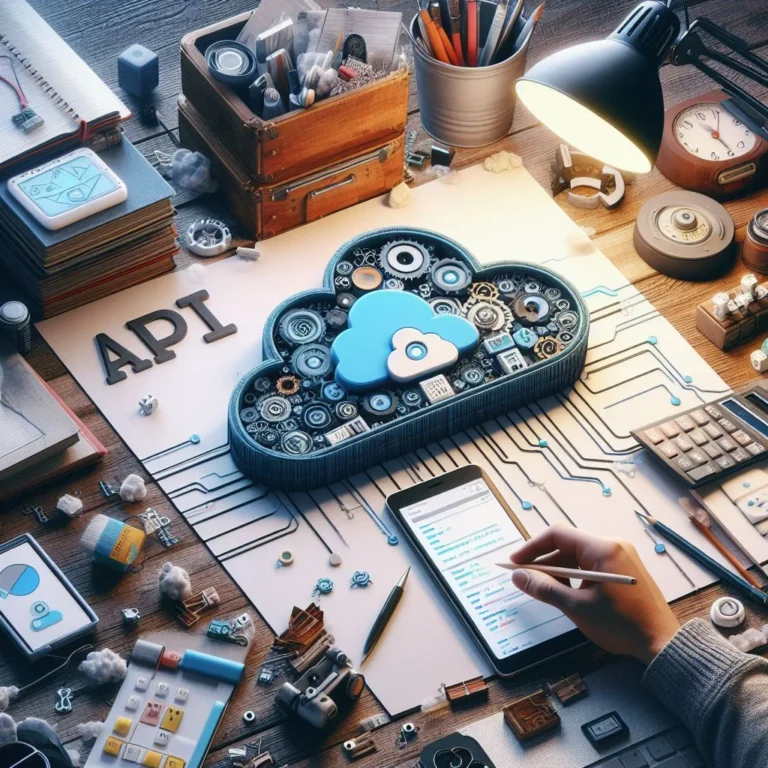What is Web3.0 and how it works?

What is Web3.0 and how it works?
From static web pages to today’s interactive social web, the internet has been through so much evolution since it was first anticipated. Now, apparently a brighter promise called Web 3.0 is going to hit, sometimes also referred to as the “decentralized web,” this technological advancement is going to focus on shifting paradigms about how we approach online platforms, how we deal with data, and our digital identities.
Unlike previous versions of the Web, web3.0 uses blockchain technology, decentralized networks, and smart contracts, giving users more control of digital identities and assets. Web 3.0 aims to abolish the intermediaries and provide a more transparent, secure, and user-centric web. Cryptocurrency, decentralized finance, NFTs, and DAOs, it is transforming the complete way humans have come to view ownership, privacy, and participation in the World Wide Web.
What is web3.0
Web 3.0 refers to the next generation in web evolution, with most attention given to the decentralization of the internet and giving users more control over their data. Gavin Wood first introduced this term in 2014; he is one of the co-founders of Ethereum. The Web 2.0 edition is controlled by a handful of large corporations like Meta, Google, and Amazon to collect and monetize user data. Web 3.0 leverages technologies like blockchain and smart contracts in the case of interactivity to enable users to safely manage personal data without intermediaries. Creating an online experience that is both private and transparent and owned by users themselves. Web 3.0 is still nascent and in the development phase. It intends to use AI and machine learning to enable a more adaptive and smarter web.
Evolution of the Web
To understand how web3.0 works and how it will change the dynamics of the World Wide Web, learning the history and evolution of the Web will help us.
Web 1.0
Back in the 1990s when the web was introduced, the web was read-only and known as static web. Think of it as a digital library or newspaper where users can browse information but cannot interact or contribute to it. Webpages were coded in HTML. Webpages could be searched by browsers like Internet Explorer. It was primarily text-based and information-driven.
WEB 2.0
In the early 2000s, the Internet became more than an online digital library. It allowed two-way communication enabling users to create, share, and collaborate with content on the internet. The rise of forums, and social media platforms lets users connect and share information with others. This led to the dominance of big tech companies like Meta, Twitter, and YouTube. These companies collect users’ data and use it to fuel targeted marketing campaigns.
How web3.0 works
Web3.0 embodies the transformative stage of the internet by combining the decentralization of web1.0 and the interactivity of web2.0 enabling a more secure, transparent, and user-centric online experience. Unlike web2.0, where big tech companies dominate the internet space and own data, web 3.0 leverages blockchain, smart contracts, and decentralized networks to give users control over their data and digital identities.
Here is the breakdown of how web3.0 works.
Blockchain Technology
Blockchain, in short, is a decentralized and distributed ledger of information recorded across multiple computers or nodes and not in one central server, making the data tamper-proof and transparent. No centralized body controls it, giving birth to a decentralized alternative for the centralized servers and databases that are used by Web 2.0.
For example, the most used blockchain, Ethereum, offers developers the opportunity to develop decentralized applications (dApps) using this common platform and run them under their wing with transparency and security
Recommended article: Understanding LLMs in AI
Decentralized Networks (dApps)
Web 3.0 applications are termed dApps, which operate on decentralized networks and are not controlled by a central host from a single organization. Applications use blockchain in their processing and data repository so they are not subject to censorship and no single point of failure. Users have complete control over their data.
For example, instead of logging into a social media platform controlled by some corporation, you would use a dApp where your personal data is encrypted and protected, and you have full control over your data.
Smart Contracts
Smart contracts are self-executing agreements written in some specific programming language like Solidity or Vyper, which automatically execute once predefined conditions are met. These contracts eliminate the need for intermediaries like banks or brokers, as they can handle transactions directly between users.
For example, in a decentralized marketplace, payment for a product can be automatically released when the product is delivered, thanks to a smart contract. This guarantees transparency and trust without needing a third party.
Decentralized Finance (DeFi)
Decentralized Finance is one of the revolutionary applications of Web 3.0. Decentralization of the traditional concept of banking, loans, and trading is the focus. The absence of mediators like banks and brokerages is ensured due to blockchain technology and smart contracts. Assets can be lent, borrowed, and traded directly amongst the users through decentralized platforms with DeFi. Such a system would provide financial services to virtually any person with an internet connection, independently of permission from a central authority.
For example, instead of borrowing money from a bank, you could use a decentralized platform like Aave or Compound, where smart contracts facilitate loans between users. These platforms enable lending and borrowing with cryptocurrencies without needing to trust a single institution, offering a more inclusive financial system.
Tokenization and Digital Assets
Web 3.0 introduces the concept of tokenization, where real-world assets (such as art, property, or even your data) can be converted into digital tokens stored on the blockchain. These tokens can be traded, sold, or used across decentralized networks.
Cryptocurrencies like Bitcoin and Ethereum are examples of digital assets used in Web 3.0. Additionally, Non-Fungible Tokens (NFTs) represent ownership of unique digital items like art, music, or virtual real estate.
Non-Fungible Tokens (NFTs)
NFTs are one of the most significant innovations under Web 3.0, as it’s changing the concept of ownership in digital assets. Cryptocurrencies, such as Bitcoin, have fungible value, which is absolutely identical in worth, but NFTs are unique pieces of digital asset – anything from art, real estate, music, or virtual products. There’s no scope for duplication, and each piece is stored in blockchain networks along with proof of ownership.
For instance, artists can now tokenize their work as NFTs, allowing them to sell their digital art directly to collectors without intermediaries. Platforms like OpenSea and Rarible facilitate these NFT transactions on decentralized networks, ensuring creators retain ownership rights and can even receive royalties for secondary sales.
The Role of AI and Machine Learning in Web 3.0
With Web 3.0, AI and machine learning shall become integral to being more intelligent and adaptive to be maybe even more helpful in putting experience on the web. The processing of many bits can allow it to learn from user behavior, personalize content, and improve decision-making, all contrary to Web 2.0, where such data is controlled by big tech companies. This time, users own their data in Web 3.0. When all this happens, AI systems work in a decentralized manner.
For example, decentralized AI networks like SingularityNET allow anyone to create, share, and monetize AI services at scale, without the control of centralized organizations. This not only promotes open innovation but also ensures that AI developments remain transparent and aligned with user interests.
Limitations of Web3.0
While it’s exciting to dream of Web 3.0, it is still, after all, a very immature effort. One of the significant current problems with most blockchain networks, including Ethereum, is their inability to scale, meaning that even as simple an action as sending multiple transactions can take a while and cost even more in transaction fees during peak usage periods. Layer 2 scaling (ex-Polygon) and Ethereum 2.0 look to find ways to make this much more efficient and decrease transaction fees costs.
Another challenge is the user experience. Web 3.0 technologies like decentralized applications and smart contracts can be complex for everyday users, requiring more intuitive interfaces and education for widespread adoption. Additionally, the regulatory landscape for decentralized systems remains uncertain, as governments try to balance innovation with protecting users from fraud and ensuring compliance with financial regulations.
You might like: SOLID Principles in Python
Conclusion
Web3.0 is one of the most significant changes to shape our interaction with the internet and is based on controls of data, control over privacy, and ownership. Web3.0 would be transformed into a better, more transparent, safe, and user-centric web by making use of blockchain technology, decentralized networks, and smart contracts. While huge challenges remain, such as scalability and regulation, the promise of decentralized finance, digital identity, and autonomous organizations speaks to the potential future where individuals are more in charge of their digital lives, opening up new online participation, ownership, and innovation possibilities.
Talha is a seasoned Software Engineer with a passion for exploring the ever-evolving world of technology. With a strong foundation in Python and expertise in web development, web scraping, and machine learning, he loves to unravel the intricacies of the digital landscape. Talha loves to write content on this platform for sharing insights, tutorials, and updates on coding, development, and the latest tech trends






